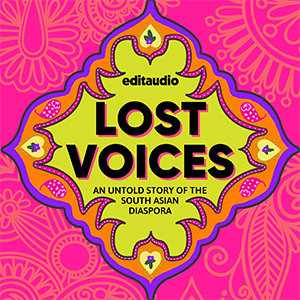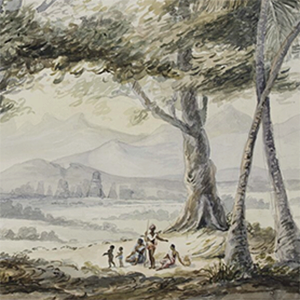Welcome to the Archives
Archives hold the records that people use to document their experiences. Archives can provoke questions about history, identity, memory, heritage.
This website looks at how archives are being created by South Asian women today, and how scholars in India and in the South Asian diaspora confront the legacy of colonialism in archives that detail the lives and work of colonizers.
Whose voices are missing from these archives?

About the Gwillim Archives
The Gwillim Archives is an example of a colonial archive. It brings together online the letters and paintings made by two English sisters, Elizabeth Gwillim and Mary Symonds, during their stay in Madras (Chennai) in South India between 1801 and 1808.
The archives were created as part of a research project headed by Rare Books and Special Collections at McGill Library in Montreal, funded by the Social Science and Humanities Research Council of Canada. The Gwillim Project brings together collections and scholars from Canada, India, Britain and the United States.

Lost Voices: The Podcast
How do people in the South Asian community in Canada today look at their own pasts and create their own archives?
In this four-part podcast, journalist Alisha Sawhney dives into the Gwillim archives, asks questions, and reaches out to her network to see how young South Asians' archiving and memory projects are preserving diverse voices.
Listen to Lost Voices: An Untold Story of the South Asian Diaspora.

New Perspectives, New Voices
What is the value of colonial archives like that created by Elizabeth Gwillim and her sister Mary Symonds, two Englishwomen who lived in South India over 200 years ago?
The last few years have seen a movement in the archival world to acknowledge the historic and ongoing violence of colonialism, and the complicity of archival collections in this violence.
How do South Asian archivists and scholars confront this colonial legacy head on? Read their New Perspectives.
Content warning
The archival resources in this exhibition contain offensive historical language and content, for example, language used to refer to racial, ethnic and cultural groups. Items in the collection, their content and their descriptions reflect the time period when they were created and the view of their creator. We chose not to censor these items in order to accurately represent the bias and prejudice of the time. Please, take care when viewing this exhibition as you may encounter terms or images that are hurtful to you or elicit strong emotional responses.